#5th Century Art
Text
For #WorldCamelDay:

Mosaic Fragment with Grazing Camel
Byzantine; Eastern Mediterranean, probably Syria, 5th century
Stone in mortar, 143 × 166.5 × 6.5 cm (56 1/4 × 61 1/2 × 2 1/2 in.)
On display at Art Institute of Chicago
“This image of a grazing camel probably came from a larger composition with other animals that decorated the floor of a semipublic space within a private home, such as a reception or dining room. This animal is represented against a white ground decorated with florets. A bell hangs from the camel’s neck as it reaches toward an object, perhaps a vessel filled with water, at the lower right. The knobby contours of the camel’s body are accentuated by areas of shading in subtly modulated colors, including black, brown, brick red, and olive green.”
info via https://www.artic.edu/artworks/35355/mosaic-fragment-with-grazing-camel
#camel#ancient art#Byzantine art#5th century art#Art Institute of Chicago#museum visit#mosaic#World Camel Day#animal holiday#animals in art#Near Eastern art
61 notes
·
View notes
Text
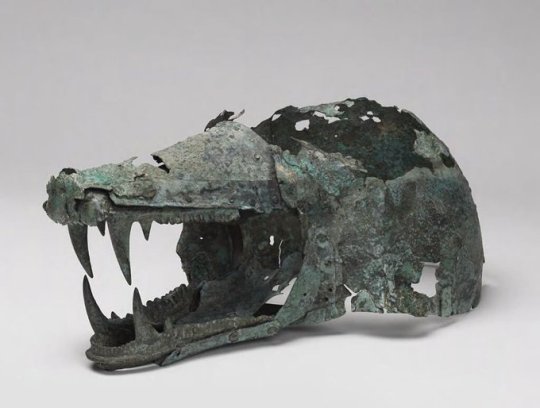
Etruscan Bronze Helmet in the Shape of a Wolf’s Head
6th-5th centuries BCE.
#Etruscan Bronze Helmet in the Shape of a Wolf’s Head#6th-5th centuries BCE#Wolf's Head Helmet#Head of a Boar#bronze#bronze helmet#bronze sculpture#ancient artifacts#archeology#archeolgst#history#history news#ancient history#ancient culture#ancient civilizations#etruscan history#etruscan art
4K notes
·
View notes
Text

~ Coin, Tetradrachm: A. Head of Athena, three olive leaves on the helmet; B. AΘE
Country/Issuer: Ancient Greece, Attica Athenes
Date: 5th century B.C.
Medium: Silver
#ancient#ancient art#history#museum#archeology#archaeology#ancient history#coin#ancient coins#money#numismatics#athens#attica#ancient greece#greece#ancient greek#tetradrachm#athena#silver#5th century B.C.
2K notes
·
View notes
Text

Terracotta figures and statues from Cyprus
* mostly 5th century BCE
* Medelhavsmuseet, Stockholm
Stockholm, November 2023
#Cyprus#5th century BCE#ancient#art#terracotta#statue#figure#Vouni#Medelhavsmuseet#Swedish museums#my photo
79 notes
·
View notes
Text



This scenario has been playing nonstop in my mind for hours help
#the english language was developed in what#5th century?#and this kid was in the inbetween for possibly thousands of years#this is entirely plausible#my art#my toh art#i want to read a fic about this so bad#philip wittebane#emperor belos#the collector#the collector toh#toh the collector#comic#toh comic#toh#the owl house#toh humor#toh funny#toh spoilers#genocide mention#sorry idk how tws work
1K notes
·
View notes
Text
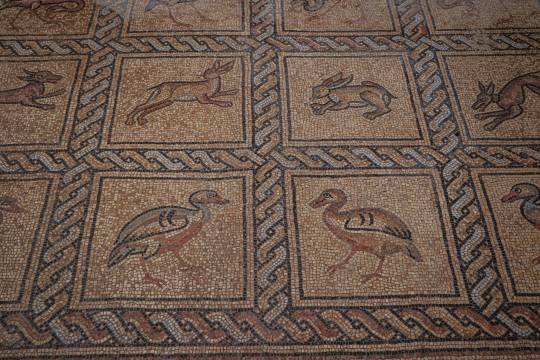



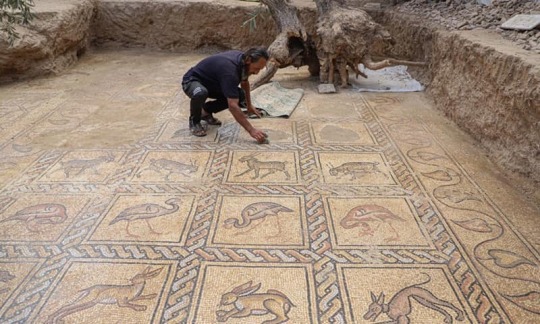
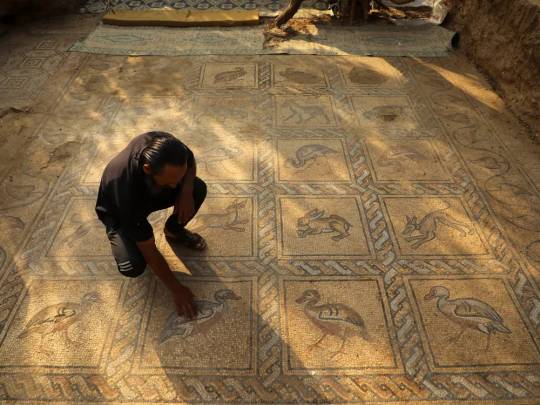
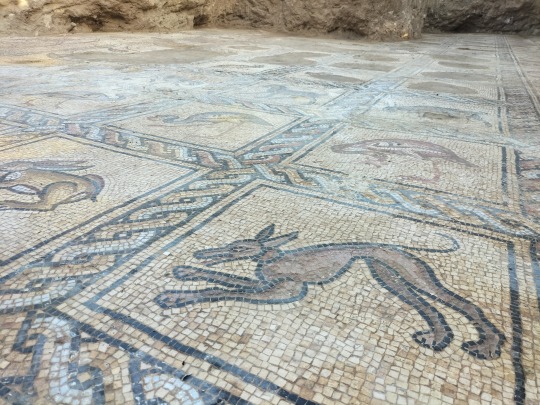
Byzantine Mosaic, Bureij refugee camp, Gaza Strip, Palestine,
5th to 7th centuries AD,
Salman al-Nabahin, a Palestinian farmer, unearthed the mosaic pavement, thought to date from the fifth to the seventh century AD, while working in his olive orchard in Bureij refugee camp, about half a mile from the border with Israel.
Trying to understand why some trees had not properly taken root, Nabahin said he and his son began digging. Then the son’s axe hit something hard and unfamiliar in appearance.
The Palestinian ministry of tourism and antiquities said the mosaic included several panels depicting animals and other features of social life during the Byzantine era, the continuation of the Roman empire in eastern provinces from the fifth century.
Gaza is rich in antiquities, having been an important trading spot for civilisations dating as far back as the ancient Egyptians and the Philistines depicted in the Bible, to the Roman empire and the Crusades from the 11th to the 13th centuries.
Several discoveries have been made in recent years. Due to a lack of funds and expertise, Gaza has usually invited international groups to help with the process of excavation and preservation.
#art#history#design#style#archeology#palestine#mosaic#gaza#gaza strip#5th century#7th century#refugee camp#byzantine#human history#free palestine#bureij#animals
102 notes
·
View notes
Text

Day 9: Celtic - Morgan le Fay; I realize that the runes are Germanic, but it’s a Green Knight reference 👀👀
#jenstober23#morgan le fay#the green knight#arthuriana#arthurian legend#celtic mythology#roman britain#celtic#5th century#6th century#briton tag#traditional art#history art#inktober#inktober 2023#drawtober#drawtober 2023#artober#artober 2023#witchtober#witchtober 2023#day 9
120 notes
·
View notes
Text
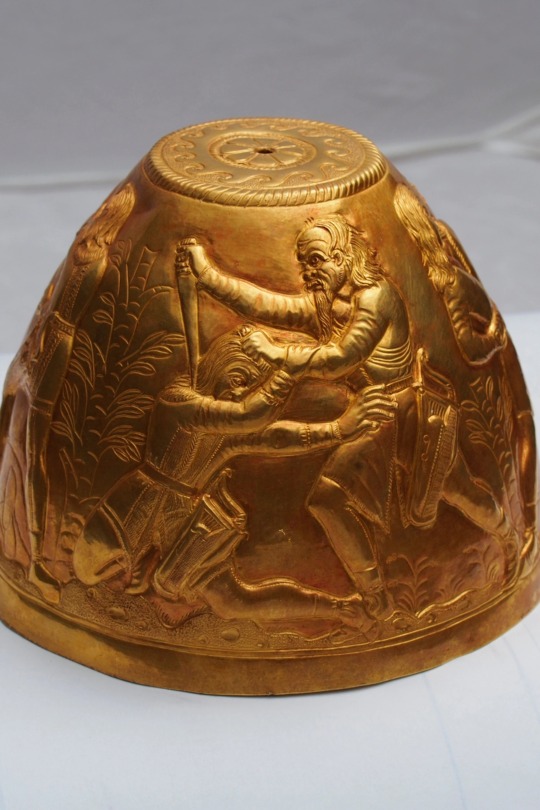


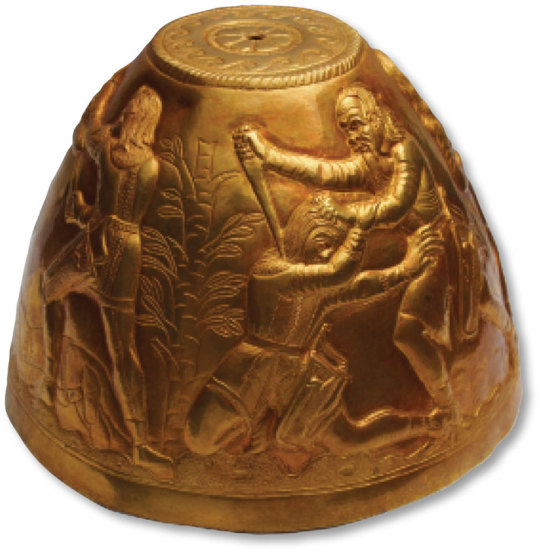

Scythian vessel depicting fighting scene 5th C. BCE. From Sengileevskoe-2 kurgan. The vessel also contained black residue that came back positive as opium and cannabis.
"The Man-eaters are the most savage of all men in their way of life; they know no justice and obey no law. They are nomads, wearing a costume like the Scythian, but speaking a language of their own; of all these, they are the only people that eat men."
-Herodotus, The Histories 4.106.1
#scythian#scythian gold#antiquities#artifacts#art#ancient art#history#ancient history#herodotus#literature#5th century bce#cannabis#opium
417 notes
·
View notes
Text


This pic makes me sob
#Lannes#marshal Lannes#Jean Lannes#Napoleon#napoleon bonaparte#napoleonic#napoleonic era#first french empire#19th century#french empire#france#history#Bonaparte#Napoleon’s marshals#art#military history#historical art#battle of aspern-essling#aspern-essling#war of the 5th coalition#5th coalition#napoleonic wars#painting#portrait#1800s#1800s art#19th century art#battle
70 notes
·
View notes
Text
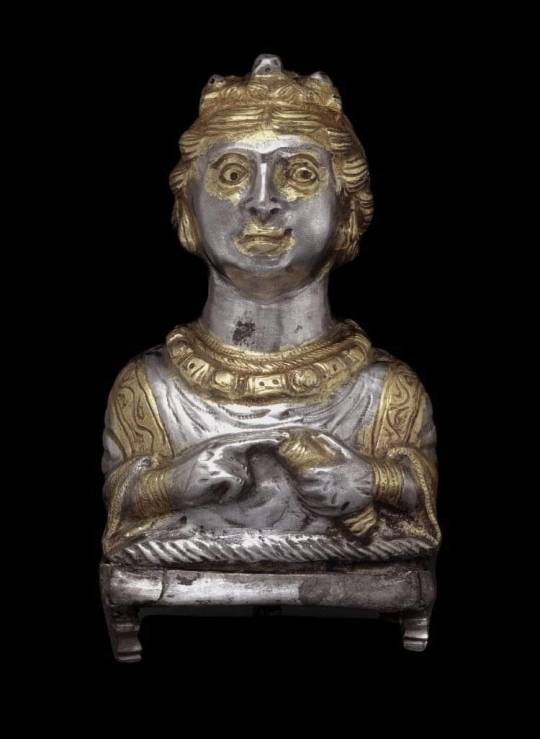
A silver pepper pot in anthropomorphic form. Roman Britain, buried in the 5th century AD, from Hoxne, Suffolk.
The pepper pot was found in 1992 by a farmer who was using his metal detector to search for a lost hammer. He found his hammer – it is now in the British Museum – but also a hoard of over 15,000 gold and silver coins, gold jewellery and numerous small items of silver tableware. The coins in the hoard establish that its burial took place some time after AD 407/8. Only a very wealthy family could have owned such treasures. We do not know the identity of the person who buried it but several objects are inscribed with the name Aurelius Ursicinus.
The pepper pot is in the shape of a wealthy well-fed woman wearing late Roman fashions. She wears a sleeved undergarment with tight gilded cuffs at the wrists, and a wide-sleeved over tunic with stripes of gilded and engraved decoration over the shoulders representing appliqued bands of embroidered or patterned textile (clavi).
Her golden (gilded) hair is done up in an intricate style that was often represented in late Roman art: the hair is parted in the middle, with rolls at the sides. The back hair is worked into a flat series of twisted locks at the neck that are drawn up over the back of the head, turned under at the front, and held in place with hairpins. Three knobs at the front and another at the crown of the head represent the ungilded hairpins.
Almond-shaped earrings and a necklace of large beads are depicted in relief and gilded, and there is additional gilding on the face, covering not only the eyes but the entire eye sockets, and the mouth, so as the flames from oil lamps flickered, the face would have seemed to come alive.
She holds a gilded scroll in her left hand, to which she points with the index finger of her right hand, probably to symbolise her learning and authority. We do not know if the figure represents a particular woman. ... It's ineffable.
Pepper was just one expensive luxury traded across the Indian Ocean in ancient times, as it did not grow in Britain or any other part of the Roman Empire. It was grown in India and to get to Suffolk, the pepper was transported by sea, river and over land.

https://www.britishmuseum.org/collection/object/H_1994-0408-33
http://www.teachinghistory100.org/objects/about_the_object/pepper_pot
https://upload.wikimedia.org/wikipedia/commons/thumb/1/1a/Hoxne_Hoard_28.jpg/800px-Hoxne_Hoard_28.jpg
spotted on Archaeologist Ticia Verveer's facebook page; https://www.facebook.com/100044382881604/posts/pfbid0UGcEJok8i67xeezyj2CLcKMJsbnLKAkWdy7NmP8TKZZ55opE4nU5fdVfqTSm7URXl/
#antique#ancient#archaeology#pepper#pepper pot#ancient history#ancient art#silver pepper pot#crowned figures#fashion history#ineffable inspiration#5th century ce#gilded figures#Aurelius Ursicinus#ancient roman art#ancient rome#ancient britain
179 notes
·
View notes
Photo

Demon mask dated from the V century BC.
#demon mask#artifact#archeaology#anthropology#ethnology#arts#mask#5th century#Máscara de demonio datada a partir del siglo V a.C.
147 notes
·
View notes
Text
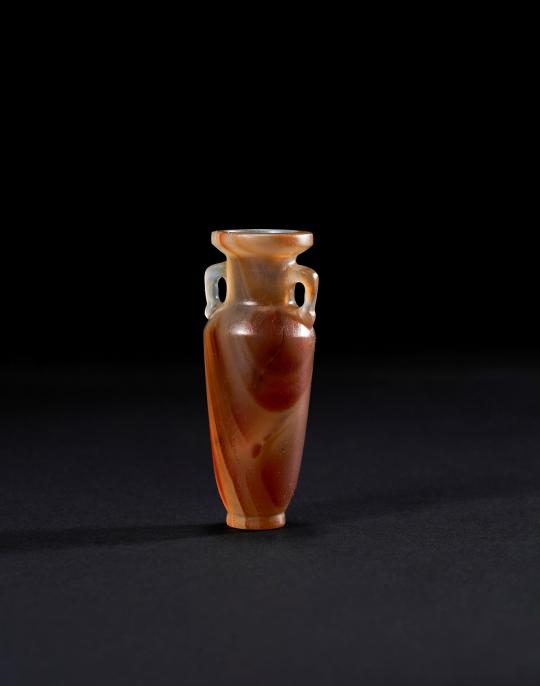
A GREEK AGATE VASE
CIRCA 5TH CENTURY A.D.
#A GREEK AGATE VASE#CIRCA 5TH CENTURY A.D.#ancient artifacts#archeology#archeolgst#history#history news#ancient history#ancient culture#ancient civilizations#ancient greece#greek history#greek art
144 notes
·
View notes
Text


~ Pendant in the Form of a Figure.
Culture: Tiwanaku
Place of origin: Peru
Date: A.D. 400–800
Medium: Shell, stone, silver, copper, and cotton
#ancient#ancient art#history#museum#archeology#archaeology#ancient history#5th century#9th century#pendant in the form of a figure#figure#peru#peruvian#south america#tiwanaku#a.d. 400#a.d. 800
1K notes
·
View notes
Text


#wolfer art#something something coffee became widespread in the 16th century and the mideval ages lasted from the 5th to around the 15th so#fe15#fire emblem#fire emblem echoes#shadows of valentia#doodle
25 notes
·
View notes
Text



Athena mounting a four-horse chariot
Mersenaki
Ca. 510-460 BCE
Medelhavsmuseet, Stockholm
Stockholm, November 2023
#Athena#Mersenaki#Cyprus#ancient#art#terracotta#statuette#goddess#chariot#animals#horse#clothing#helmet#6th century BCE#5th century BCE#Swedish museums#my photo#Medelhavsmuseet
82 notes
·
View notes
Text
curse of. thinking about the vampires instead of the assignmence again.
#today's art adventure#it is no good because the writing music that is Working right now is the same for both the vampires and the essays#so when I look in the vampire document I get essays on the brain and when I look in the essay document I get vampires#also I do not think it is super helping that people are having their bicycles mended several feet from my head at this time#and also vampire update. rowlandson's first name is thomas and I still need to figure out marcellus's full name and his present alias#he's been around since probably the 5th century (rowlandson is not Super accurate in his estimation but he's Reasonably Close)#and thus I want to come up with at least a few of his more-than-a-thousand-years'-worth of names...
12 notes
·
View notes